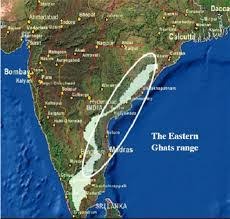
The Western Ghats, also known as the Sahyadri Mountains, run along the western coast of India, from the border of Gujarat and Maharashtra to the tip of Tamil Nadu. The area is a UNESCO World Heritage Site and is known for its biodiversity and unique ecosystem. It is one of the eight "hottest hotspots" of biological diversity in the world and is home to many threatened and endangered species. Despite its importance, the Western Ghats face many threats such as deforestation, mining, and overgrazing. The map above shows the area of collection of various species found in the Western Ghats. It is a crucial tool for researchers and conservationists to understand the distribution of species and identify areas that require protection. The collection areas shown on the map are based on data gathered from various sources and provide a comprehensive overview of the biodiversity of the region. Studies have shown that the Western Ghats are home to over 7,000 species of flowering plants, 330 species of butterflies, 157 species of amphibians, 508 species of birds, and 139 species of mammals. In addition to these, numerous species of reptiles, fish, and invertebrates call the region home. The map shows the distribution of these species across the Western Ghats and highlights the areas of high biodiversity. The Western Ghats are also home to many indigenous communities who depend on the forests for their livelihood. These communities have lived in harmony with the environment for centuries, and their traditional knowledge has played a crucial role in conserving the biodiversity of the region. However, with increasing development and encroachment, these communities are facing numerous challenges such as displacement, loss of access to resources, and cultural erasure. Conservation efforts in the Western Ghats are crucial for safeguarding the unique biodiversity of the region and ensuring that the indigenous communities can continue to thrive. Initiatives such as the Western Ghats Special Ecology Task Force (WGSETF) have been set up to protect the region and promote sustainable development. However, it is important for all stakeholders, including governments, NGOs, and local communities, to work together to ensure the long-term protection of the Western Ghats. In conclusion, the Western Ghats are a vital part of India's natural and cultural heritage. The map above provides an important tool for researchers and conservationists to understand the distribution of species across the region. It is essential for us to work together to protect the Western Ghats and ensure that the biodiversity and indigenous communities of the region continue to thrive.

www.tekportal.net

www.researchgate.net






Post a Comment for "Highest Peak In Eastern Ghats In India Map"